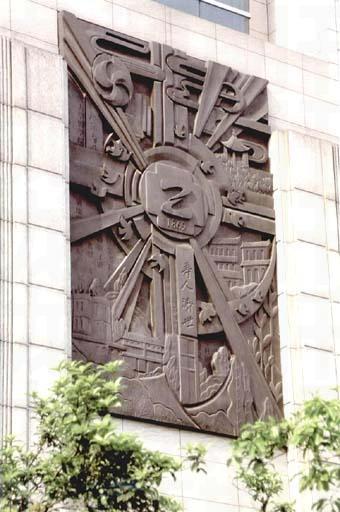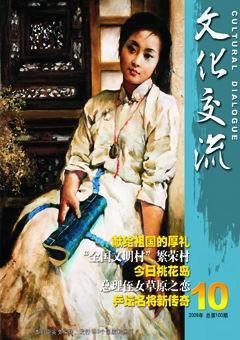Dr. Main and the Universal Benevolence Hospital of Hangzhou
By Shi Weidong, Jin Fangfang, Translated by Shi Weidong


David Duncan Main (1856-1934) can be regarded as the most famous British in the modern history of Hangzhou, the capital city of eastern Chinas coastal Zhejiang Province.
David Duncan Main was born in Ayrshire of Scotland, UK on June 6, 1856. He dreamed in his childhood years of becoming a doctor and doing medical services all over the world. In 1881, he acquired the degree of bachelor of medicine in the University of Glasgow and married Florence Nightingale Smith, a woman who had wanted to be a warm-hearted nurse like “the lady with the lamp” as her name indicated. Shortly after their wedding, Dr. Main happily accepted a commission of the Church Missionary Society to work in Hangzhou. The couple arrived in Hangzhou in 1881.
Dr. Main took over the Opium Rehabilitation Center, which had been set up in 1869 in three rented houses in Zhidafangbo lane by Dr. Meadows from the Anglican Church Missionary Society. The small center had only 16 beds and offered simple medical services. Under the leadership of Dr. Main, it underwent rapid growth. It became the Universal Benevolence Hospital of Hangzhou in 1884. By 1890, the hospital had 100 beds and offered a full range of medical services. In 1894, the couple established a 100-bed hospital for women in Hangzhou. Mrs. Main was in charge of the hospital. The womens hospital ran well due to Mrs. Mains good relationship with madams and ladies of the upper society in Hangzhou.
The Universal Benevolence Hospital of Hangzhou was a landmark of Hangzhou at that time. It had, among other facilities, a$1000 lecture hall, a delicately decorated reception room, a library, a meeting room, and an operation center. Convalescent homes for tuberculosis and leper patients were also set up respectively at the top of Baoshi Hill and on the west side of the Big Buddha Temple at the foot of the Baoshi Hill. In 1906, the medical school of Universal Benevolence Hospital came into being with Dr. Main as its president.
The Mains were vacationing back in their home country when the Revolution 1911 rocked China. The hospital suffered no damage as it came under the protection of the revolutionary army. Many doctors of the hospital joined the emergency team and the hospital served as a medical center for wounded soldiers.
Dr. Mains success in Hangzhou can be attributed to his medical techniques and medical ethics. He was highly trusted and respected by both government officials and residents of Hangzhou. The public respect helped the hospital operations run smoothly through the turbulent years in the early 20th century.
Donations from Chinese and foreigners were a big factor behind the success of hospitals daily operations and expansion over years. In its early years, the small centers operation depended largely on the funds from the Church Missionary Society. In 1883, a total sum of 1,700 pounds from the William Charles Jones foundation helped give birth to the Universal Benevolence Hospital of Hangzhou in 1884. Lord Maclay set up a foundation in the hospital in the name of his son, a soldier killed in action in a war. In addition to medicines and devices, the hospital received, from 1916 to 1925, a total of 27,555 US dollars in cash from Chinese and 546,463 US dollars in cash from foreigners.
The charity hospital was able to offer most of its services free of charge. Outpatients needed to pay a symbolic amount for medicines and hospitalized patients needed to pay for meals. Thanks to the donations, the hospital expanded and got equipped with medical instruments. In 1911, the first X-ray machine was installed at the hospital, making it the first hospital with such a device in Zhejiang. The hospital gradually became equipped with a full range of modern devices.
Dr. Main maintained a very good relationship with the government officials and local residents. And he was on good terms with the military too. The hospital provided services to local officials and their families, which in turn donated cash generously to the hospital. Dr. Main served as the doctor for the Hangzhou Customs House. It was said that he had an official title by the Qing Dynasty government.
When Dr. Main and his wife left Hangzhou to enjoy their retirement in their home country in 1926, the Universal Benevolence Hospital of Hangzhou was a full-fledged modern hospital with 500 beds and three operating rooms. It was then the biggest hospital in Zhejiang Province. It also operated a full range of departments and convalescence homes across the city.
In 1952, the hospital was donated to the government unconditionally and renamed the Second Affiliated Hospital of Zhejiang Medical University.
This year marks the 140th anniversary of Zhidafangbo Opium Rehabilitation Center, the earliest precursor of the Second Hospital of Zhejiang University.
Though David Duncan Main was probably the most important British in the modern history of Hangzhou, his name remains largely unknown to most people in Hangzhou today. Leighton Stuart (1876-1962), arguably the most important American in the modern history of Hangzhou, was born in Hangzhou and grew up in Hangzhou. He served as the American ambassador to China in the late 1940s. He was finally buried in Hangzhou in 2009. The statue of Sr. Hacard, a French nun, is now erected in the compound of the Hangzhou Red Cross Hospital.
The relative anonymity of David Duncan Main in Hangzhou can probably be ascribed to a few land disputes during his stay in Hangzhou. He got involved in the disputes as he rented lands from Buddhist temples for setting up convalescence homes without knowing the temples were not fully qualified for transactions. The last land dispute started in 1918. The complicated case did not come to an end until he left. The ordinary land dispute turned political as the hospital had the foreign church background. His name has remained little bit tarnished. Experts, after looking into archives of the case, have concluded that David Duncan Main did not behave overbearingly and high-handedly in the case. What he did was in the interest of the hospital and the medical school. It is hoped that David Duncan Main can be rehabilitated and his statue can stand in the compound of the Second Hospital of Zhejiang University as soon as possible. □

